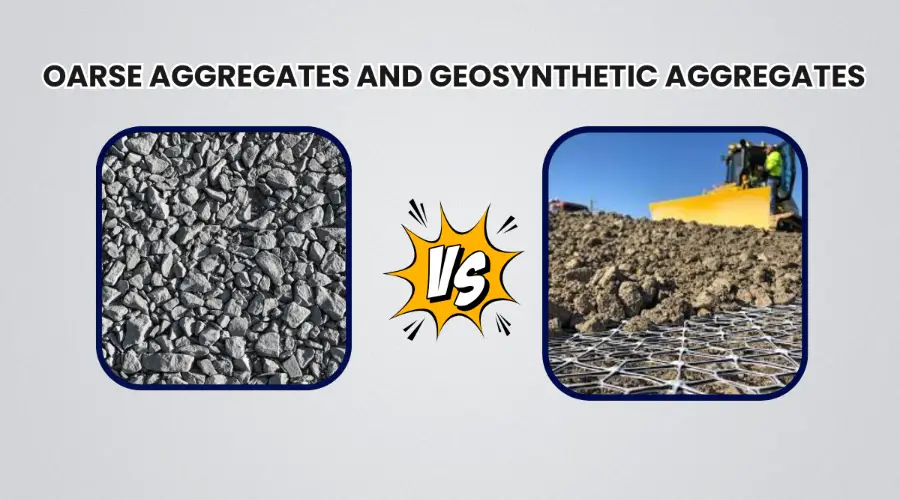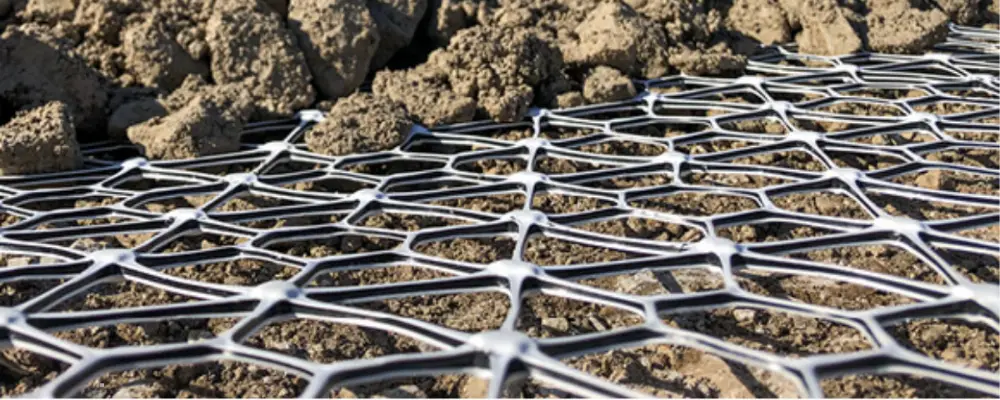In construction, aggregates are grained particulate materials such as sand, gravel, and crushed stone. Aggregates act as reinforcement to add strength to concrete. They are well known for their hydraulic strength, which makes them suitable for constructing drainage elements and as base material under building foundations, roads, and railroads. However, in recent times, the conventional aggregate has been superseded by geosynthetics with their low carbon footprint, design flexibility, and cost controls. In terms of performance, cost, and environmental impact, geosynthetics are sometimes more ideal than conventional aggregates. This article dwells deep into the geosynthetic aggregators and their contribution to the construction industry.
What are Geosynthetic Aggregates?
Geosynthetic aggregates are manufactured from a polymeric material and used with soil, rock, cement, or other geotechnical materials same as the conventional aggregates. The main purpose of any geosynthetic material is to improve the condition of soil. To explain this in simple terms, the word geosynthetic can be split into two, where geo means earth and synthetic means man-made. Recent issues that have emerged due to erosion, landfill, and filtration have increased the demand for this material among constructors. This material is suitable for all construction projects where long-term durability is required. There are various types of geosynthetic materials made in different forms and used in a variety of projects. Some of these are geotextiles, geogrids, geonets, geomembranes, geosynthetic clay lines, geoform, and geocells.
Components of Geosynthetic Aggregates
Geosynthetic aggregates are not standalone aggregates, but involve components of both geosynthetic products and traditional aggregates. The combination improves the performance of various engineering projects. Some geosynthetic components are:
- Geotextiles- permeable fabrics that can separate, filter, reinforce and protect soil
- Geogrids- have openings that interlock with the aggregate particles providing necessary reinforcement
- Geocells – three-dimensional cellular structures that confine the aggregate within the cell.
Some aggregate components are crushed stone, recycled concrete aggregate, gravel, sand, and slag.
Benefits and Applications of Using Geosynthetic Aggregates
Some of the benefits a constructor could gain from using geosynthetic materials are,
- The use of geosynthetic materials prevents the mixing of two different soils. This could be achieved by using geotextiles, and geocomposites.
- The use of geogrids and geotextiles provides much-needed tensile strength to the soil, acting as a reinforcement.
- It helps in confinement by restraining the movement of soil mass geocells and acts as drainage for transporting fluids.
- Geomembranes and geocomposites can be used as fluid barriers.
- They are highly beneficial in erosion control by avoiding detachment and transport of soil particles by rain, runoff and wind.
- It even protects the structure from damage and alleviates stresses and strains transmitted to the material.
- It is used in earth-retaining structures to reinforce, retain and protect soil. This improves the stability of the soil.
- The feature of separation helps in the construction of embankments by separating embankment materials from soft foundation soil. It even helps in providing a waterproofing system.
- It provides a stronger foundation, as it drains the water from the base and reduces settlement by reducing load-bearing capacity.
- It also helps in preventing erosion and scouring around underwater foundations.
- Used in unpaved roads to improve load-bearing capacity and to reduce the degree of rutting.
- Used in paved roads and airfield overlay bases as it can prevent water infiltration, reflective cracking, and contamination of base course.
- Used in railway tracks to prevent ballast contamination, dispose of water to side drains, contamination and upward groundwater movement.
- It is even used in dam embankments, containment ponds, reservoirs, and canals.
How Geosynthetic Aggregates Work
The four major works of geosynthetic aggregates are,
- Reinforcement: The integration of geogrid or geocells with the aggregate layer provides necessary strength and stability. It reduces the risk of deformation and distributes loads more evenly.
- Drainage: It can create a drainage path within the aggregate layer, removing excess water, and improving the durability of the structure.
- Filtration: It filters out fine particles from the soil and water. This prevents clogging of drainage systems.
- Separation: It is used to separate different layers such as aggregate layers with that of the underlying soil. With this, it maintains the integrity of each layer.
Comparison Between Coarse Aggregates and Geosynthetic Aggregates

| Coarse Aggregate | Geosynthetic Aggregate |
| The composition includes natural materials such as crushed stone, gravel, or sand. | The composition of geosynthetic aggregate is a combination of geosynthetic materials and coarse aggregate. |
| The performance of coarse aggregate is determined primarily through the physical properties of the material used. | The performance is increased by the addition of geosynthetic material. |
| In terms of affordability, coarse aggregates are cost-effective. | In terms of affordability, the cost of geosynthetic aggregate is high because of the inclusion of geosynthetic material. |
| Mining and transportation of the components of coarse aggregate cause harm to the environment. | It reduces environmental impact as it uses recycled materials. |
Conclusion
Geosynthetic aggregates consist of a combination of natural aggregates and geosynthetic materials. They offer several advantages over traditional aggregates. By incorporating geotextiles, geogrids, or geocells, these hybrid solutions enhance soil reinforcement, drainage, filtration, and separation. As a result, they improve the load-bearing capacity, stability, and durability of infrastructure projects. While the initial cost may be higher, they can ultimately prove to be more economical due to lower maintenance needs and a longer lifespan. Additionally, the use of geosynthetic aggregates can reduce environmental impacts by lowering the demand for natural resources and promoting the use of recycled materials.
FAQs
Geosynthetic aggregates are commonly known for large-scale applications; however, they are very helpful in small-scale applications as well. In the case of residential construction, they can be used for stabilising slopes, improving drainage, and reinforcing foundations. They can also be applied to enhance soil quality and prevent erosion in landscaping.
The use of geosynthetic aggregate reduces material usage by reinforcing soil and improving load-bearing capacity, providing a longer lifespan by protecting it from erosion, weathering and other hazards, reducing environmental impacts, and providing a recyclability option.

